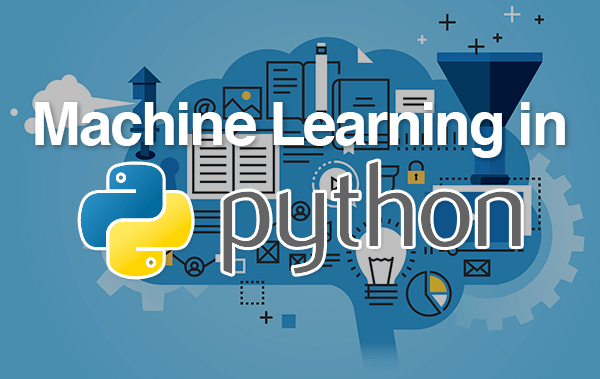Contents
Introduction
Machine learning has revolutionized the way we analyze data and make predictions. With its ability to uncover patterns and insights from vast amounts of information, machine learning has become an integral part of various industries, from finance to healthcare and beyond. Python, a versatile and powerful programming language, provides a rich ecosystem of libraries and frameworks that make it an ideal choice for implementing machine learning algorithms. In this comprehensive guide, we will explore the fundamental concepts of machine learning and demonstrate how to apply them using Python.
Understanding Machine Learning
Machine learning is a branch of artificial intelligence that focuses on developing algorithms that can learn and make predictions or decisions without being explicitly programmed. Instead of relying on explicit rules, machine learning models learn from data and adapt their behavior based on patterns and examples. This ability to learn and generalize from data is what makes machine learning so powerful.
There are several types of machine learning, including supervised learning, unsupervised learning, and reinforcement learning. In supervised learning, models are trained on labeled data, where the input data is associated with corresponding output labels. The goal is to learn a mapping between the input and output data to make predictions on unseen examples. Unsupervised learning, on the other hand, deals with unlabeled data and focuses on discovering hidden patterns or structures in the data. Reinforcement learning involves an agent interacting with an environment, learning from feedback in the form of rewards or penalties to make decisions and optimize its behavior.
Getting Started with Python for Machine Learning
Before diving into machine learning, it’s essential to set up the Python environment and familiarize yourself with the libraries and tools commonly used in this domain. Python provides several powerful libraries for scientific computing and machine learning, such as NumPy, Pandas, and scikit-learn. These libraries offer a wide range of functionality for data manipulation, preprocessing, and model building.
To begin, you’ll need to install Python and the necessary libraries on your system. Python distributions like Anaconda provide a convenient way to install Python and commonly used libraries in one go. Once you have Python set up, you can start exploring Jupyter Notebooks, a popular tool for interactive coding and data exploration. Jupyter Notebooks allow you to write and execute code in a cell-by-cell manner, making it easier to experiment with machine learning algorithms and visualize the results.
Data Preprocessing and Feature Engineering
Data preprocessing is a crucial step in any machine learning project. It involves cleaning and transforming raw data to make it suitable for model training. Real-world datasets often contain missing values, outliers, or inconsistent formats, which can adversely affect model performance. Data preprocessing techniques, such as handling missing data, outlier detection, and feature scaling, help address these challenges.
Feature engineering is another critical aspect of machine learning. It involves creating new features from existing data to capture relevant information and improve model performance. Feature engineering techniques include one-hot encoding, polynomial features, and feature selection based on statistical measures or domain knowledge.
Supervised Learning Algorithms
Supervised learning is a widely used approach in machine learning, where models learn from labeled training data to make predictions on unseen examples. There are various supervised learning algorithms, each with its strengths and weaknesses. Linear regression and logistic regression are fundamental algorithms used for regression and classification tasks, respectively. Decision trees and random forests are popular ensemble methods that combine multiple decision trees to make predictions. Support vector machines (SVM) are effective for both classification and regression tasks, while Naive Bayes classifiers are known for their simplicity and efficiency.
Selecting the right algorithm for a given task depends on several factors, such as the nature of the data, the complexity of the problem, and the desired performance metrics. Evaluating and comparing models using appropriate evaluation metrics, such as accuracy, precision, recall, and F1-score, helps in selecting the best algorithm for the task at hand.
Unsupervised Learning Algorithms
Unsupervised learning algorithms are used when the data is unlabeled or when the goal is to discover hidden patterns or structures within the data. Clustering algorithms, such as K-means, hierarchical clustering, and DBSCAN, group similar data points together based on their characteristics. Dimensionality reduction techniques, such as Principal Component Analysis (PCA) and t-SNE, reduce the dimensionality of the data while preserving its essential information. Anomaly detection is another application of unsupervised learning, where the goal is to identify rare or abnormal instances in the data.
Unsupervised learning plays a crucial role in exploratory data analysis, data visualization, and data preprocessing. It helps in gaining insights from large and complex datasets, enabling better decision-making and problem-solving.
Deep Learning with Python
Deep learning has gained significant attention in recent years, thanks to its remarkable success in various domains, including computer vision, natural language processing, and speech recognition. Deep learning models, specifically neural networks, are designed to mimic the structure and functionality of the human brain. They are capable of learning complex patterns and representations from large amounts of data.
Python provides powerful libraries like TensorFlow and Keras for building and training deep learning models. Convolutional Neural Networks (CNN) are commonly used for image classification tasks, while Recurrent Neural Networks (RNN) excel in handling sequential data, such as text and time series. Transfer learning, where pre-trained models are utilized as a starting point for new tasks, has also become prevalent in deep learning.
Evaluation and Model Selection
Evaluating machine learning models is essential to assess their performance and ensure they generalize well to unseen data. Evaluation metrics vary depending on the task, such as accuracy, precision, recall, F1-score, and area under the ROC curve. Cross-validation is a technique used to estimate a model’s performance on unseen data by partitioning the available data into multiple subsets for training and testing.
Model selection involves choosing the best model from a set of candidate models. It often requires tuning hyperparameters, which control the behavior of the learning algorithm. Techniques like grid search and random search help in finding the optimal hyperparameter values.
Deploying Machine Learning Models
Once a machine learning model is trained and evaluated, it needs to be deployed for practical use. Deploying a model involves exporting it in a format suitable for production and integrating it with other software systems. Python provides several options for deploying machine learning models, such as building APIs using web frameworks like Flask or FastAPI. These APIs allow other applications to make predictions using the trained model through HTTP requests. Integration with web applications, mobile apps, or other systems can be achieved using appropriate communication protocols and libraries.
Conclusion
In this comprehensive guide, we have explored the essential concepts of machine learning and how to apply them using Python. We covered the various types of machine learning, including supervised, unsupervised, and reinforcement learning, and discussed the practical aspects of getting started with Python for machine learning.
We delved into data preprocessing and feature engineering techniques to prepare the data for model training. We explored popular supervised and unsupervised learning algorithms, along with evaluation and model selection techniques. Additionally, we touched upon the exciting field of deep learning and its applications, as well as the process of deploying machine learning models for real-world use.
Please visit python tutorial to learn about basics of python.


